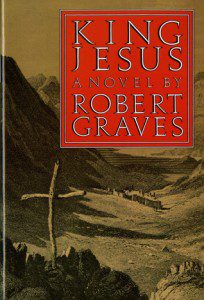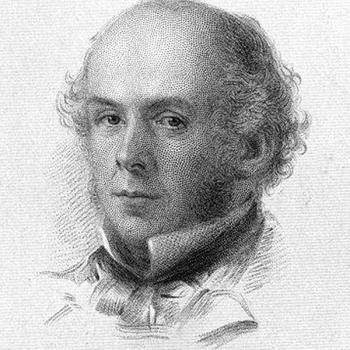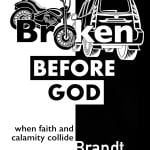A classic book can change your life. Oddly, on occasion, a much lesser and truly flawed work can have a similar effect.
Over forty years ago, I read Robert Graves’s daring 1946 novel King Jesus, which a later publisher’s blurb characterized as “one of the most controversial historical novels of all time.” Not once was I under the illusion that this was his best writing, or that it came vaguely close in quality to his Claudius novels. At times, his ideas are downright silly. Yet the intoxicating wealth of ideas in this quirky book had an immense impact of me, and in some ways, I am still working through them. I owe a lot of my later interests to following up on those thoughts. Oddly, too, many of Graves’s insights from so many years ago still demand attention today. In my next couple of columns, I will be exploring some of these ideas. (I am adapting parts of the following text from my recent column at aleteia.org).
The plot of King Jesus alternates between brilliant and bizarre. It is presented not as a pseudo-gospel, but as a sober historical work by the fictional Agabus the Decapolitan, writing in 93AD. Agabus offers a secular and political interpretation of Jesus’s career, whose kingdom was definitely of this world. Jesus’s mother was Mary, descended from an ancient royal line, and his father was Antipater, oldest son of Herod the Great. Jesus was thus the legitimate heir of the Herodian dynasty, and rightful king of Israel. On top of all this, Graves had his distinctive ideas about the ritual nature of sacred kingship, drawing heavily on books like Sir James Frazer’s The Golden Bough. Graves also listened far too much to a number of crank theorists and charlatans who wandered into his orbit. Parts of the book are incomprehensible speculations about lost sacred calendars, together with eccentric parallels between Hebrew religion and Greek mythology. Wikipedia describes the book, generously, as “semi-historical.”
As Graves himself wrote,
“These researches have taken me into uncomfortably remote fields. For example, the mystical meanings here given to the Golden Calf and the Seven Pillars of Wisdom are deduced largely from the remnants of Gnostic, ultimately Essene, secret lore preserved in Calder’s ‘Hearings of the Scholars’ and other miscellanies of ancient Irish poetic doctrine, and in the 13th century Welsh ‘Llyfr Coch o Hergest;’ and they yield their full sense only in the light of Babylonian astrology, Talmudic speculation, the liturgy of the Ethiopian Church, the homilies of Clement of Alexandria, the religious essays of Plutarch, and recent studies of Bronze Age archeology.”
It all gets wearing. But prospective readers, take note. If you can get through the first 160 pages or so, until Jesus finally appears as a character, your patience will be well rewarded.
Obvious flaws apart, so much of King Jesus is fascinating, not least in terms of the alternative theories about Jesus and early Christianity that Graves presents. So many of these, moreover, are familiar to us today in the form of supposedly astonishing discoveries from recently found Gnostic gospels. Reading King Jesus, though, we see that these ideas were standard components of a 1940s bestseller, written the year before the celebrated finds at Nag Hammadi (and two years before the Dead Sea Scrolls were found).
Think of a contemporary modern speculation about Jesus, and Graves already had it in 1945. We find here Jesus as the secular revolutionary; the husband of the pagan goddess of the land; the expounder of Oriental wisdom; the secret heir to the secular kingdom of Israel; the master of Hellenistic mysteries; a participant in tribal fertility rites; an esoteric teacher and numerologist; and the husband of Mary Magdalene.
Quite apart from the political content of the main plot, this is a thoroughly mystical Jesus utterly at home with the Gnostic schools of thought of the second and third centuries. As so often in the texts of such later movements, Jesus moves in a world of active and powerful female interlocutors, including Mary Magdalene and Salome. This is a Jesus that we have come to know so well from modern reconstructions of the Gnostic gospels.
Most surprising, perhaps, for a modern reader is Graves’s presentation of Jesus’s mission as literally a gender war, a struggle to defeat and root out the remnants of the Goddess cult that (supposedly) pervaded Judaism. As the apocryphal scripture credits Jesus with saying, “I am come to destroy the works of the female.” Graves followed closely the work of Raphael Patai about the Hebrew Goddess, which he would first explore in print in his 1947 book Man and Temple in Ancient Jewish Myth and Ritual and later in his 1967 The Hebrew Goddess. The long friendship between the two is recorded in Patai’s Robert Graves and the Hebrew Myths (Wayne State University Press, 1992).
The first reason, then, to read King Jesus is to place in context recent claims about the revolutionary insights modern scholars have reputedly learned about the enormous diversity of early Christianity, as described in the Gnostic gospels. Reading Graves, we find that such ideas were utterly familiar even before the Nag Hammadi finds, to the point of being old hat. They were easily available to anyone prepared to buy a standard texts such as the Fragments of a Faith Forgotten, by G. R. S. Mead (1900) and more especially M. R. James’s Apocryphal New Testament (1924). Graves had certainly read early heresiarchs like Epiphanius, as well. By incorporating these ideas into a popular novel, Graves further spread basic knowledge of the “Alternative Jesus” to anyone with the price of a current hardback. Anyone with access to the 1910 Encyclopedia Britannica could read the wide-ranging scholarship of authorities like R. H. Charles.
Just pulling recent themes together, I was recently writing about the pseudepigraphic work called the Psalms of Solomon, probably from the first century BC. A standard English edition of those works appeared as early as 1891, as Psalms of the Pharisees: Commonly Called the Psalms of Solomon, edited by Herbert Edward Ryle and M. R. James (Cambridge University Press, 1891).
Knowing Graves’s book has also given me a healthy skepticism about subsequent claims about ostensibly astounding new discoveries. My first question when I read such a story is, roughly, but didn’t M. R. James or R. H. Charles write about that ninety years back? Or Mead even earlier? And the German academic world was still more inquisitive and accomplished than the English.
Speaking personally, following up such “alternative gospels” – and trying to understand how they fitted in with Christian history – has also been enormously enlightening. Although I rarely agree with Graves’s specific interpretation or slant, the quest has been very rewarding. Among other things, it laid the foundations for the work that led me to write books like Hidden Gospels (2001) and The Many Faces of Christ (forthcoming this Fall).
I’ll have more to say about Graves’s provocative ideas.
By the way, the New York Times just did a fine piece about Graves himself and his life on the Mediterranean island of Majorca.
















